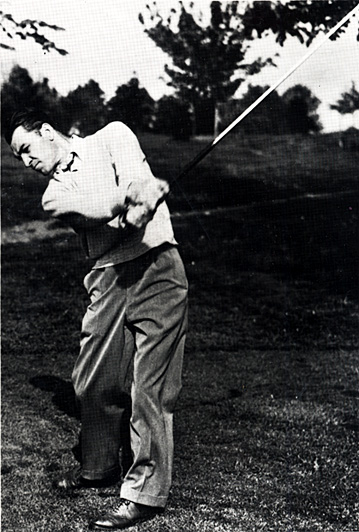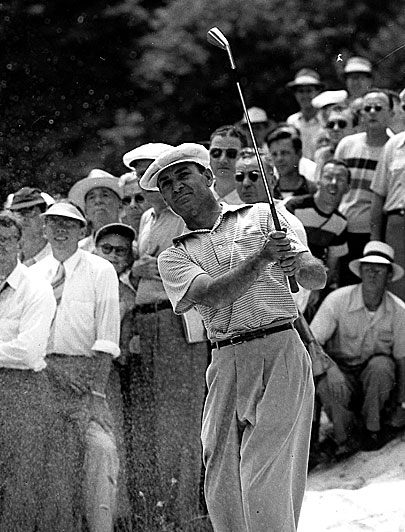Bobby Eldridge, “The Simple Golf Swing”, talks about the correct golf stance and golf grip tip.
PurePoint Golf Instruction – Stance and Ball Flight – Golf Grip Instruction
I’m going to talk with you about how to draw the golf ball, hook the golf ball, or fade or slice the golf ball on purpose.
That way, the next time you go play, if you have a dogleg right or a dogleg left, or the wind’s blowing from the left or wind’s blowing from the right, you’ll be able to curve the golf ball that will be beneficial towards you.
Let’s say I’m going to play a hole that has a big dogleg to the left, and I think that I can get it out and around the corner. I’m going to give you a couple of ideas on how to draw the golf ball.
After you go through your routine, make sure that you aim the golf ball further right than normal, than you’re used to.
The second thing is I’m going to give you some golf grip instruction. You should turn your grip a little bit to the right. This will encourage the face to curve over.
And lastly, make sure that you’re aiming with your shoulders, knees and hips to the right. And if you’d like to and you feel comfortable, you can put the right foot back a little bit.
This will encourage the golf club to swing a little bit more underneath you from the inside.
Now let me give you a little bit of information on how to make the golf ball fade.
After you’ve gone through your routine and you’ve aimed down the left side of the fairway, another golf trip instruction is to make sure that before you draw the golf club back that you turn your grip to the left a little bit. And this will delay the face from closing opposite of the draw, and the face will return more open than it will square or closed. And then swing away and that will help the golf ball fade.
Now let’s spend a minute correcting a hook. If you’ve been struggling, really hooking a lot of your tee shots, all you have to do is check your grip. The golf grip instruction is to make sure that it’s over to the left a little bit and that will encourage the face to stay open.
If you’ve been slicing the ball, make sure you turn your grip a little bit further to the right, and that will help the golf club close and bring the ball back to center instead of slicing so much.
Try that the next time out and see how it works.
Bobby Eldridge is the Head Instructor for the PurePoint Golf Academy where he teaches “The Simple Golf Swing” theory.


